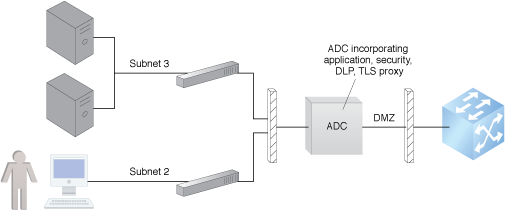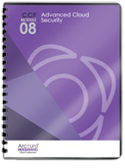Cloud Computing Patterns, Mechanisms > Mechanisms > A - B > Application Delivery Controller
Application Delivery Controller

The application delivery controller (ADC) is used to combine security functions in one device, including application layer security, distributed denial-of-service (DDoS) protection, advanced routing strategies, and server health monitoring combined with basic application acceleration and server load balancing. The ADC is typically placed in a data center between the firewall and one or more application servers in the DMZ.

An ADC installed in a data center DMZ.
The figure shows the concept of an ADC where a number of protection mechanisms are combined in a network device. ADCs are commonly used by high traffic websites as a reverse proxy to scale and accelerate Web applications by front-ending the load from the servers. ADCs can perform TLS offloading, compression, dynamic site acceleration (DSA), front-end optimization (FEO) and mobile content acceleration.
ADCs support application operation and can look deeper into the specific traffic and make more intelligent decisions. They can optimize application server performance by offloading many compute-intensive tasks that would otherwise load the server CPUs needed to deliver applications to users. An ADC can transform or rewrite the content of the client request, including the response from the servers.
Related Patterns:
This mechanism is covered in CCP Module 7: Fundamental Cloud Security and
in Module 8: Advanced Cloud Security.
For more information regarding the Cloud Certified Professional (CCP) curriculum, visit www.arcitura.com/ccp.
This cloud computing mechanism is also covered in:
Cloud Computing Design Patterns by Thomas Erl, Robert Cope, Amin Naserpour
(ISBN: 9780133858563, Hardcover, ~ 528 pages)
For more information about this book, visit www.arcitura.com/books.


